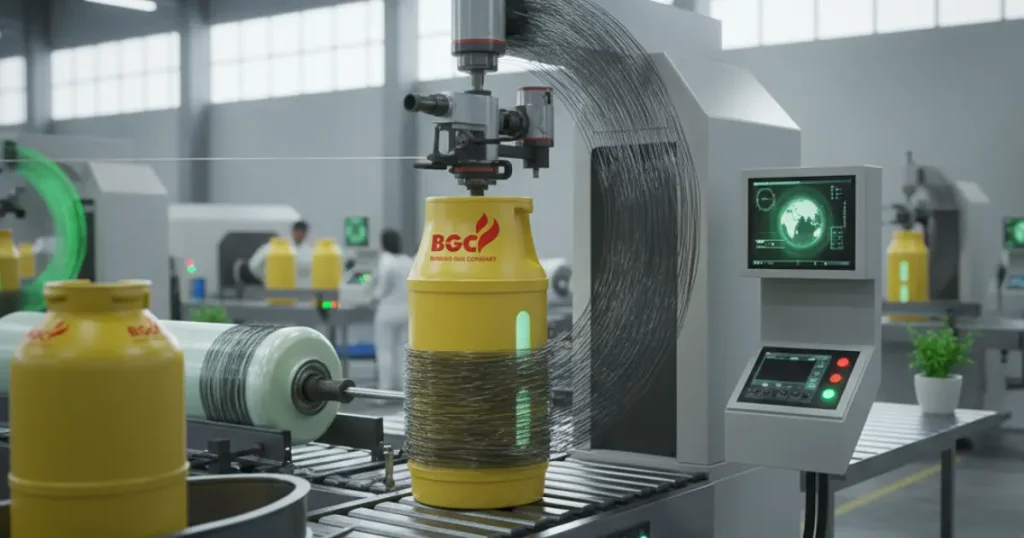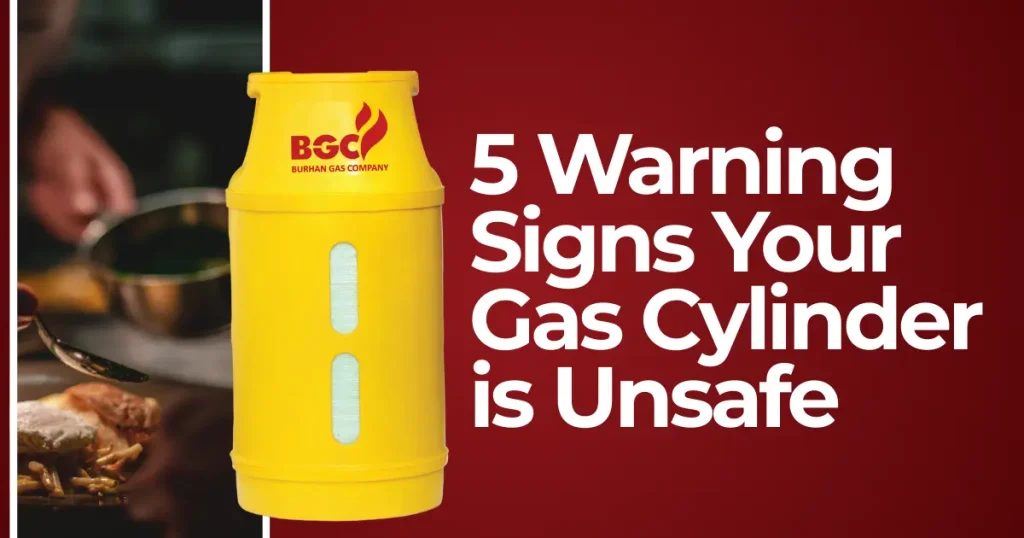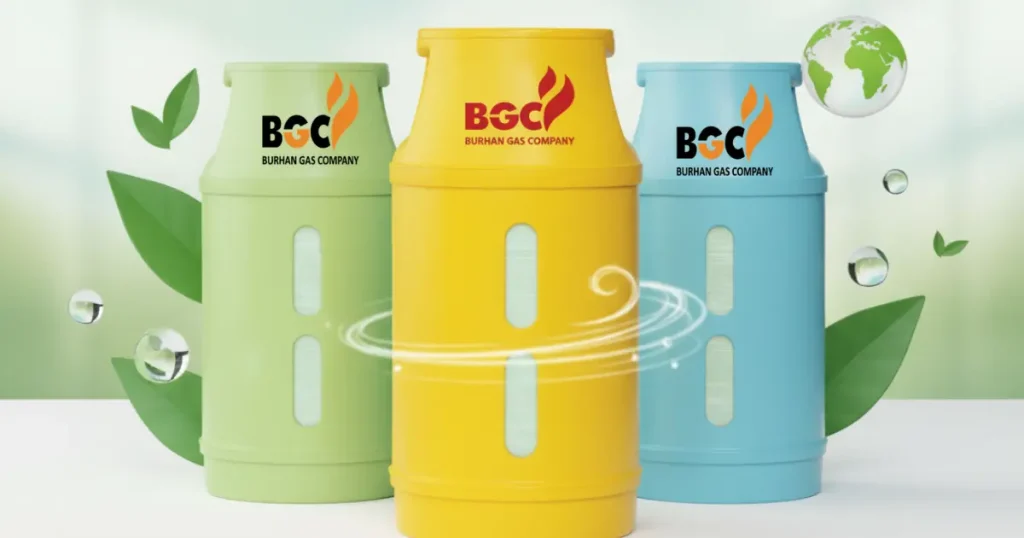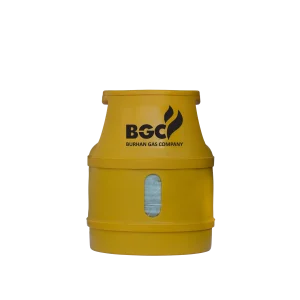Fiber Reinforced Plastic (FRP) composite cylinders represent the future of safe, lightweight, and durable gas storage. Unlike conventional steel cylinders, these advanced cylinders are crafted with polymer liners and high-strength fibers such as glass, carbon, or aramid. The combination delivers excellent pressure resistance, corrosion-free durability, and a lighter, safer product.
But how exactly are FRP composite cylinders manufactured? Let’s walk through the key steps in the process:
Liner Preparation
Every FRP cylinder begins with a polymer liner, usually made from high-density polyethylene (HDPE) or other engineered thermoplastics.
- Purpose: The liner acts as a gas barrier, preventing leakage and maintaining pressure containment.
- Manufacturing Method: Typically produced using the blow molding technique, which ensures uniform thickness and strength.
Once ready, the liner is placed inside a mold that defines the cylinder’s shape and structure.
Fiber and Preform Preparation
Next, the reinforcing fibers — which give the cylinder its strength — are prepared.
- Materials can include glass fiber, carbon fiber, or aramid fiber.
- Fibers are arranged in forms such as woven fabrics, braided sleeves, or mats.
- These fibers are shaped into a preform that fits around the liner, ready for resin infusion or winding.
This preform stage is critical, as it determines how the final composite layer distributes stresses and resists pressure.
Impregnation (Wetting)
For strength and bonding, the fibers must be fully impregnated with resin.
- Thermosetting resins (like epoxy or polyester) or thermoplastics may be used.
- Resin impregnation ensures complete fiber-to-matrix bonding, preventing weak spots.
- Methods include:
- Prepregs (fibers pre-impregnated with resin)
- Vacuum infusion (resin pulled into dry fibers under vacuum pressure)
Filament Winding
The heart of FRP cylinder manufacturing lies in the filament winding process.
- Continuous resin-impregnated fibers are wound under tension around the liner using computer-controlled winding machines.
- Winding patterns include:
- Helical winding for axial strength
- Circumferential winding for hoop strength
- The winding process ensures the cylinder can withstand high internal pressures without bursting.
Consolidation
After winding, the composite structure is consolidated.
- Purpose: Remove trapped air bubbles and achieve the optimal fiber-to-resin ratio.
- Method: Pressure and vacuum techniques are applied to compress the fibers tightly and eliminate voids.
This step ensures the cylinder has uniform strength and no weak points.
Solidification
Once consolidated, the resin must be solidified.
- Thermosetting resins: Harden through chemical cross-linking reactions during heating.
- Thermoplastic resins: Harden simply by cooling.
This stage transforms the resin from a liquid into a rigid matrix, permanently locking the fibers in place.
Curing and Finishing
The nearly complete cylinder undergoes curing, often in an oven, to reach maximum strength.
- The mandrel (temporary support) is removed.
- Edges and surfaces are trimmed and finished.
- The final cylinder is then subjected to rigorous testing, including:
- Hydrostatic pressure testing (to ensure burst safety)
- Leak detection tests
- Quality inspections for thickness, bonding, and fiber alignment
Only after passing these tests are FRP composite cylinders approved for use.
Conclusion: Innovation in Every Layer
The manufacturing of FRP composite cylinders combines advanced polymer science, precision fiber engineering, and automated winding technology. The result is a cylinder that is:
- Safer (blast-proof design)
- Lighter (up to 50% less weight than steel)
- More durable (corrosion- and impact-resistant)
- Eco-friendly (made from recyclable materials)
By mastering this manufacturing process, FRP cylinders are shaping the future of safe, sustainable, and efficient gas storage worldwide.







